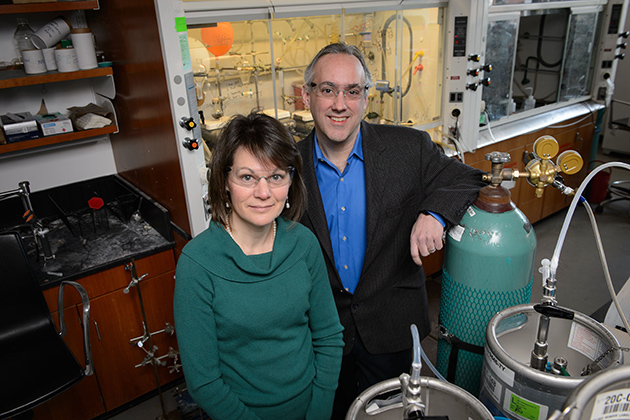As the year 2014 winds down, UConn Today takes a look at some highlights of the past 12 months in a series of posts. Here, a glimpse into research discoveries by UConn faculty.
From the verdant landscape beneath power lines that crisscross New England to an excavation site in Armenia. From a ship’s grave in the waters of the southern Caribbean to the bustling shrimp habitat off the coast of North Carolina. From charter school funding to educational achievement gaps; farmers’ markets to church pews; and genomics labs to neonatal intensive care units, UConn faculty have pushed the boundaries of knowledge through their research this year.
They have studied, questioned, tested and advanced understanding of important questions about the environment, history, economics, education, bioscience, genetics, health and human behavior, and more. Among their discoveries:
A pair of pharmaceutical science professors broke new ground in the war against diseases resistant to all known antibiotics – so-called “superbugs.” In UConn’s Technology Incubation Program, scientists discovered a novel approach to treating multiple sclerosis with embryonic stem cells.
In other labs, researchers found a new way to identify protein mutations on cancer cells, a method now being used to develop personalized vaccines to treat patients with ovarian cancer. And a nanoparticle designed by a UConn professor became a key component of a potent new malaria vaccine that’s now being tested.
At UConn Health, a two-month-old patient’s rare genetic mutation prompted researchers to sift through recordings of breathing patterns in an effort to identify early warning systems that could save other infants. Other advances pertained to more widespread health issues, including obesity and ACL, a common athletic injury.
Researchers identified how religious bias affects applicants’ hiring chances and how weight bias impacts the care that obese patients receive from their doctors.
By studying the behavior of people, one professor discovered that the online world produced achievement gaps in teen reading skills. But for a professor in digital media, a virtual world proved a successful behavioral intervention tool for risky alcohol, drug, and sexual behavior. By studying the behavior of Monk Parakeets, a faculty member discovered a way to stop the invasive birds from causing costly damage to power lines.
Products of UConn research also rolled off 3-D printers, ranging from artificial kidneys that may someday keep people alive, to replacement mouthparts that brought antique musical instruments back to life.














